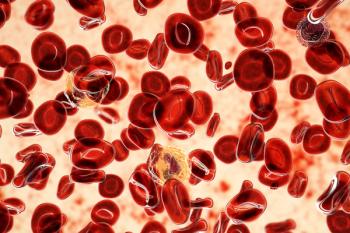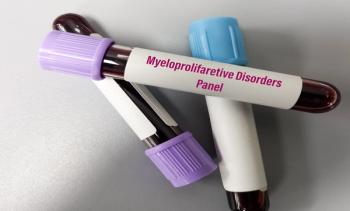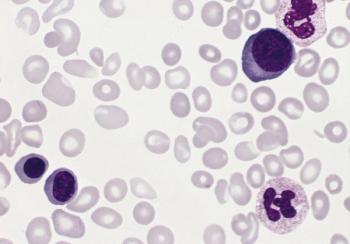
Myeloproliferative Neoplasms (MPN)
Latest News
Latest Videos

CME Content
More News

Underdosing, poor spleen response, and transfusion dependence drive inferior survival outcomes in intermediate-1 myelofibrosis.

Patients with myeloproliferative neoplasms (MPNs) appear to be at a higher risk of heart failure and pulmonary hypertension, though more research into the links is needed.

A rare case report describes a young woman whose relapse of AML following MPN coincided with severe worsening of pulmonary hypertension, highlighting the need for vigilant cardiopulmonary monitoring in hematologic malignancies.

The QRISK3 assessment is designed for the general population, but it appears to also have utility in patients with essential thrombosis and polycythemia vera.

A recent study suggests hemorrhagic events following essential thrombocythemia diagnosis are among the most significant predictors of early death.

The study found that atrial fibrillation (AF) significantly increases stroke and mortality risk in certain patients with myeloproliferative neoplasms (MPNs).

The JAKoMo study highlights ruxolitinib's long-term efficacy and safety in myelofibrosis, showing improved quality of life (QOL) and fewer adverse events in the real-world setting.

The finding that basophil counts may have prognostic significance aligns with a growing body of research into basophils in myeloproliferative neoplasms.

Multi-hit TP53 mutations significantly worsened survival in patients with myeloproliferative neoplasms (MPNs) and acute myeloid leukemia (AML), revealing critical prognostic insights.

A new report suggests a noninvasive means to evaluate portal hypertension in patients with BCR::ABL1-negative myeloproliferative neoplasms.

Adding rusfertide to standard of care more than doubled the share of patients with polycythemia vera (PV) who did not meet criteria for a phlebotomy, according to data from the VERIFY trial.

The findings highlight the limits of risk stratification algorithms based on data from older patients.

New findings suggest that reducing the variant allele frequency of JAK2V617F should be a goal of treatment for polycythemia vera.

Machine learning identifies key biomarkers predicting hydroxyurea resistance in polycythemia vera, enhancing early treatment strategies and patient outcomes.

The results offer some of the first glimpses into real-world findings of the Janus kinase inhibitor in patients with myelofibrosis (MF) and anemia.

Cardiovascular risk factors increase the risk of arterial and venous thrombosis in patients with myeloproliferative neoplasms, a study found.

In this fourth part of a discussion with The American Journal of Managed Care®, Andrew Kuykendall, MD, clinical researcher at Moffitt Cancer Center and VERIFY investigator, speaks to the impressive patient-reported outcomes seen thus far.

In part 3 of a discussion with Andrew Kuykendall, MD, Moffitt Cancer Center, he talks of rusfertide’s ability to enable patients to live a more viable life and free them from being tethered to the need for regular phlebotomies.

Treatment guidelines in polycythemia vera currently recommend maintaining hematocrit below 45%, with a higher threshold for men vs women.

Polycythemia vera is a classic myeloproliferative neoplasm and a chronic type of leukemia, which often leads to overproduction of various blood cells.

Charleston Area Medical Center (AMC) Vandalia Health was among 3 participants in the Association of Cancer Care Centers' Quality Improvement Program for myeloproliferative neoplasms.

Besides Kent Hospital, the Association of Cancer Care Centers worked with Perlmutter Cancer Center at NYU Langone Hospital and Charleston Area Medical Center Vandalia Health in Charleston, West Virginia.

Perlmutter Cancer Center at NYU Langone was 1 of 3 sites to take part in the Association of Cancer Care Centers quality improvement initiative in myeloproliferative neoplasms (MPNs).

For several years, investigators have been studying combinations that include ruxolitinib, sold as Jakafi, to treat myeloproliferative neoplasms (MPNs).

A new study evaluating the quadratic phenotypic optimization platform shows it can accurately predict personalized drug combination sensitivities, paving the way for improved treatment strategies and outcomes in acute myeloid leukemia (AML).


















































